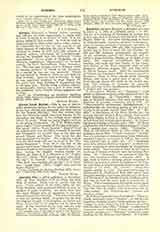

Aurora Lucis Rutilat.—This is one of the so-called Ambrosian hymns, but its author is unknown. It has been revised and separated into three hymns for the Roman Breviary. The first sixteen lines form the hymn for Lauds from Low Sunday to the Ascension, and begin in the revised form, Aurora Coelum Purpurat. There are many English versions in use among Protestants. Dr. J. M. Neale’s translation begins “Dawn purples all the east with light”. The hymn “Tristes Erant Apostoli” (lines 17-32 of the original text) is in the Office, Common of Apostles and Evangelists for paschal time at the first and second Vespers and Matins. This hymn has also been translated into English. The Gregorian melody is in the third mode and may be found in the “Vesperale Romanum”. Lines 33 to the end of the ancient hymn form “Paschale Mundo Gaudium,” the hymn at Lauds in the Common of Apostles in paschal time. Among the English versions, besides Dr. Neale’s, are those of J. A. Johnston in his “English Hymnal” (1852), “With sparkling rays morn decks the sky”; E. Caswall, “Lyra Catholica” (1849), “The dawn was purpling o’er the sky”; J. D. Chambers, “Lauds Syon” (1857), “Light’s very morn its beams displays”.
JOSEPH OTTEN

